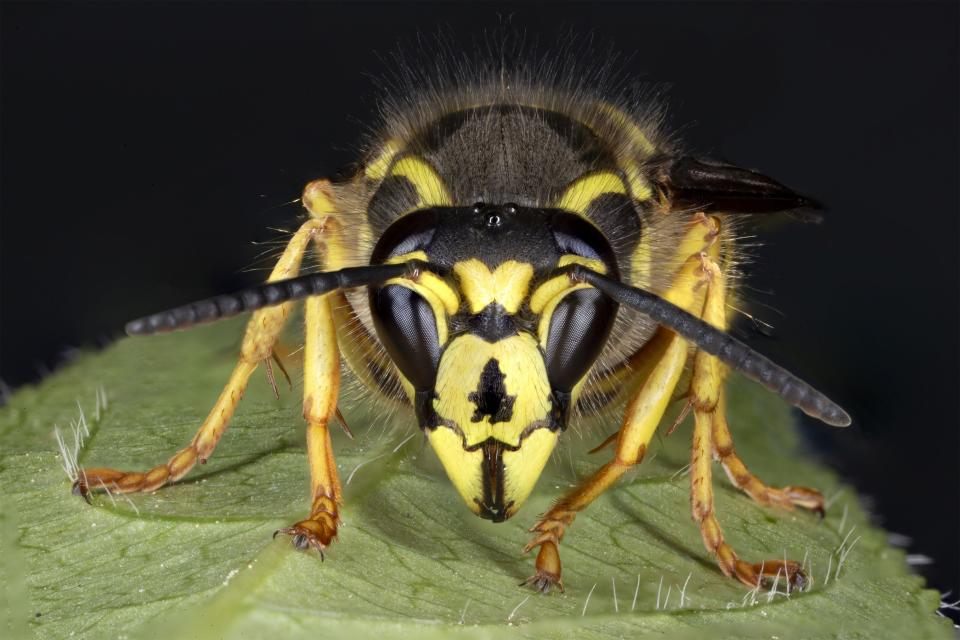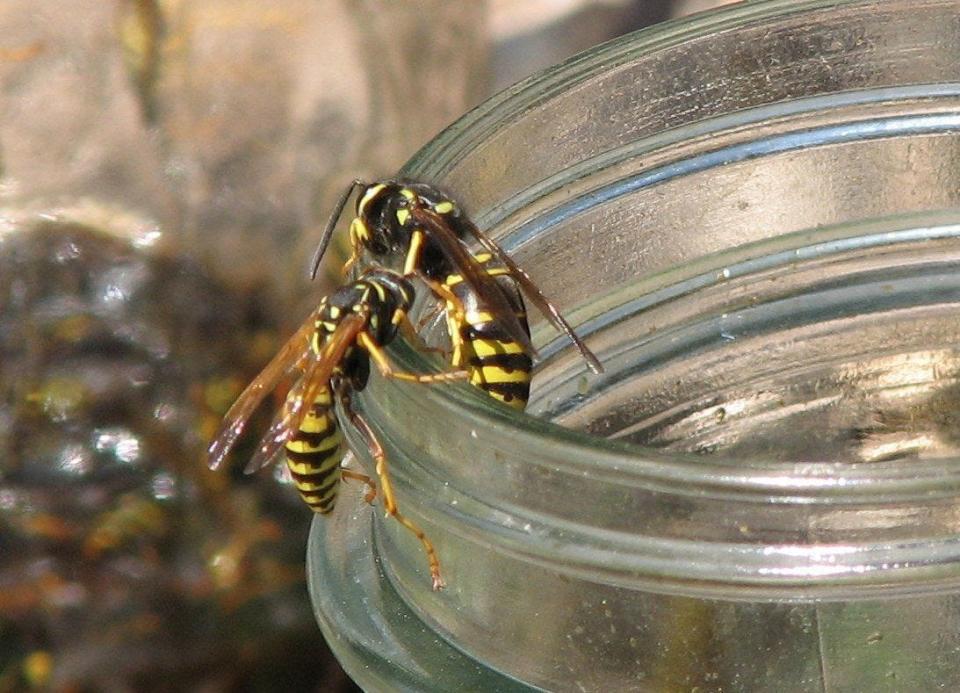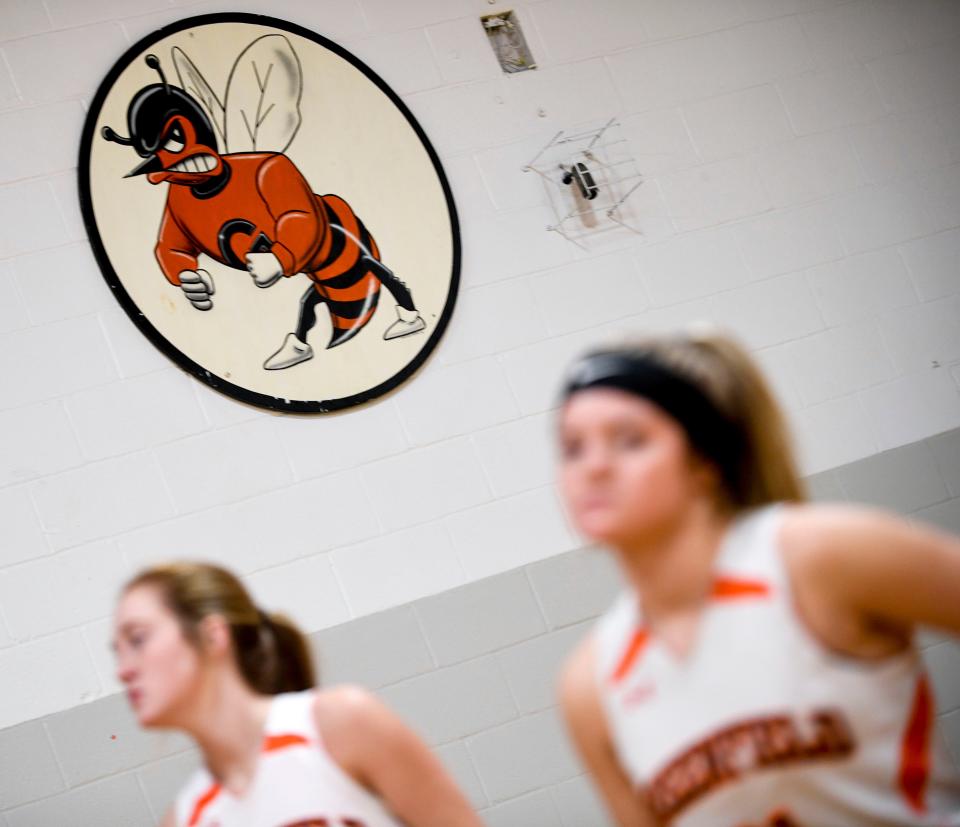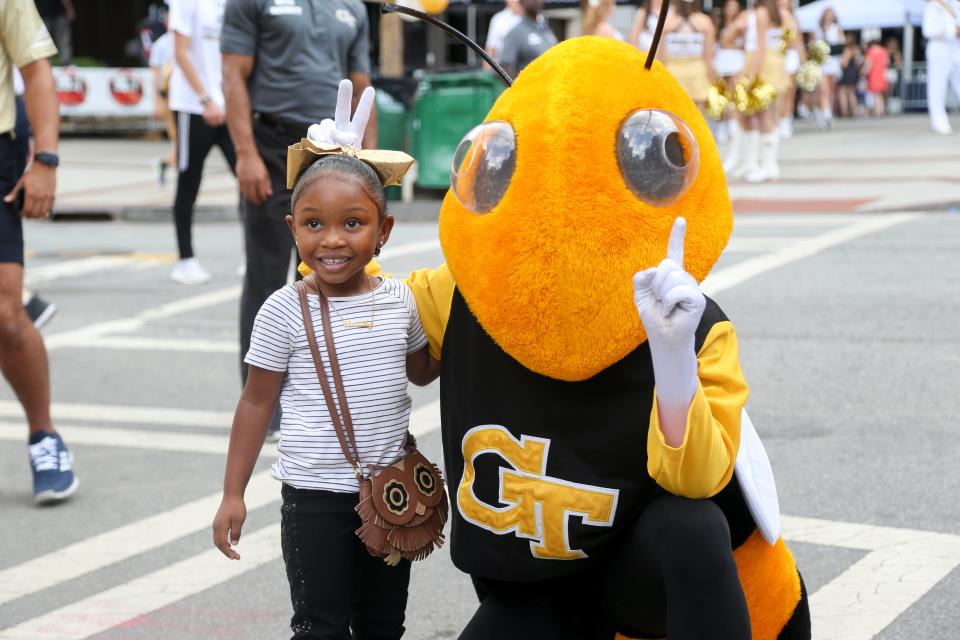Get ready, fall is yellowjacket season. But why?
With climate change thrusting our thermometers 30 degrees in one direction and 20 degrees the other in just a matter of days — how do we know that fall is right around the corner?
Well, here's a small sign. Very small.
Yellowjackets are about 0.5 inches long. But they can sure throw their weight around — as you know, if you've ever ducked them at a backyard barbecue, or shied away from them as they swarmed around a public trash can. Late summer and early fall is when they're most active. But you knew that.

"They're more aggressive this time of year," said Carol Fusco, senior naturalist at Bergen County Zoo in Paramus. "And your leftovers could be their food."
Why now? Several reasons. Not least of which is that yellowjackets, around this time, are switching to their autumn menu.
"When they go into the fall, they need sugar," said Kevin Hackett, senior national program leader of crop entomology at the U.S. Department of Agriculture. "They become sugarholics."
During the summer, Hackett said, yellowjackets seek out other insects. "They chew them up, and feed them to their young," he said. "They need protein."
In the fall, they need to bulk up on fats, because some of them are going to become queens. They seek sugar, and carbohydrates. "There's more of a sugar craving because they're going into the winter," he said.
Yellowjackets not only develop a sweet tooth at this time of year, there are also more of them looking for treats. "The colony sizes are larger at this time," Hackett said.
Many of them — like many of us — have been waiting a long time to get out of the house. Typically, queens build their paper nests, and lay eggs, in late spring or early summer. By midsummer, the first adult workers emerge, enlarge the nest, and keep caring for the queen — who keeps laying eggs. By late summer, the nest has grown to as many as 5,000 workers.
That's a lot of mouths to feed. And when they run out of fruit and flower nectar, at the end of the summer growing season, it's only natural that they turn to that other race of sugarholics — human beings.
Which is why you see yellowjackets hovering around the discarded ice cream cup in the Dairy Queen trash bin. Or encounter a nasty surprise, on the lip of your soda can, just as you're about to drink.
Insects: New Jersey mosquitoes are bad this summer, but they've been a bad joke for years
Bees: Johnson: I keep bees altruistically ... and for love of food and gardening
"They love soda," said Rob Phillips, owner of Professional Pest Management in Sayreville. "You leave a soda can outside, the next thing — yellowjackets."
Yellowjackets have other delightful quirks. For instance, this is the time if year when they are liable to change lodgings. For most of the summer, they tend to live in house siding, gaps in the brickface — any place they feel protected from the rain and the wind. But as the weather cools, they start to migrate, Phillips said.
"They start making nests in the ground, because the ground stays warmer longer," Phillips said. "So if you ever hear someone saying I was walking and all of a sudden I got swarmed by bees, they probably stepped on the entrance to a yellowjacket nest."

Sting operation
Of course, the key fact about yellowjackets — for us — is that they sting. And they can be quite aggressive.
"At first it feels like a pinch," Phillips said. "Then it feels like a burning sensation…One time, my first year when I was doing pest control, they stung me right through the bee suit."
Yellowjackets, unlike honeybees, can sting repeatedly. Though less than 1 in 100 people have a dangerously allergic reaction — and those people should seek medical attention immediately — a sting in the best of circumstances is no joke. It smarts.

That's probably why so many sports teams have adopted the yellowjacket as their mascot: Georgia Tech, Berkeley High School, the University of Rochester, Black HIlls State University, and dozens of others. "Buzz" is the George Tech mascot. "Yellowjacket" is a supervillain in the "Ant Man" franchise.
Nor is it just humans who have taken to mimicking yellowjackets. Animals like to play dress up as well. Certain bees, flies, moths, and beetles take on the faux trappings of yellowjackets, to fool predators. Because Yellowjackets have a rep.
"The technical term for that is mimicry," Fusco said. "Even in the insect world, yellowjackets are known as the ones to watch out for."
Yellowjackets, as you probably know, are not bees. They are "predatory social wasps" — though with their small, stripey bodies, they can gaslight many of us into thinking they're honeybees.
For the record, yellowjackets — unlike bees — are hairless. They do not carry pollen. They are yellower than honeybees, have thinner abdomens and longer wings. And they are much worse-tempered. "Honeybees will never attack you unless you go after the queen," Phillips said.
But though yellowjackets don't make honey for us — and sometimes make misery for us — they are still considered farmer's friends. Along with human garbage, they eat many pest insects.
So this fall, if you're stung by a yellowjacket, consider that it's for the greater good of agriculture. And consider this tip for short-term relief.
"If a yellowjacket stings you, you can put mud on the sting, or toothpaste," Phillips said. "Both of them function as surfactants." Which, as the dictionary tells us, is "a substance which tends to reduce the surface tension of a liquid in which it is dissolved."
"It helps pull the moisture out, pull the venom out," Phillips said.

WHAT TO DO IF YOU GET STUNG BY A YELLOWJACKET
For most of us, a yellowjacket sting is a minor annoyance.
For the minority of seriously allergic people, it can be serious — even deadly. Here's what you should do if you're stung, according to Kevin Hackett, senior national program leader of crop entomology at the USDA.
1. Clean the area.
2. Put something cold on it
3. Take an antihistamine (whether you're allergic to yellowjacket stings or not).
4. If you swell up on the first sting, check with a doctor
5. If you are hypersensitive, get to a hospital or use an EpiPen within the first 15 or 20 minutes.
Jim Beckerman is an entertainment and culture reporter for NorthJersey.com. For unlimited access to his insightful reports about how you spend your leisure time, please subscribe or activate your digital account today.
Email: beckerman@northjersey.com Twitter: @jimbeckerman1
This article originally appeared on NorthJersey.com: Yellowjackets: What are they? And why do they come out in the fall?

